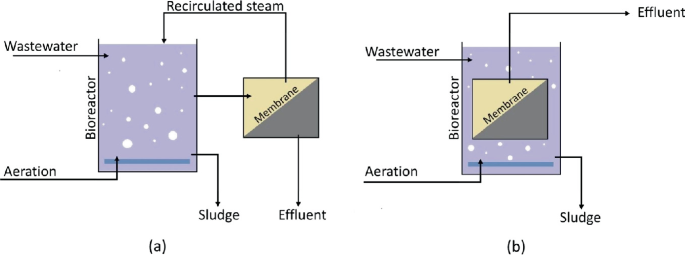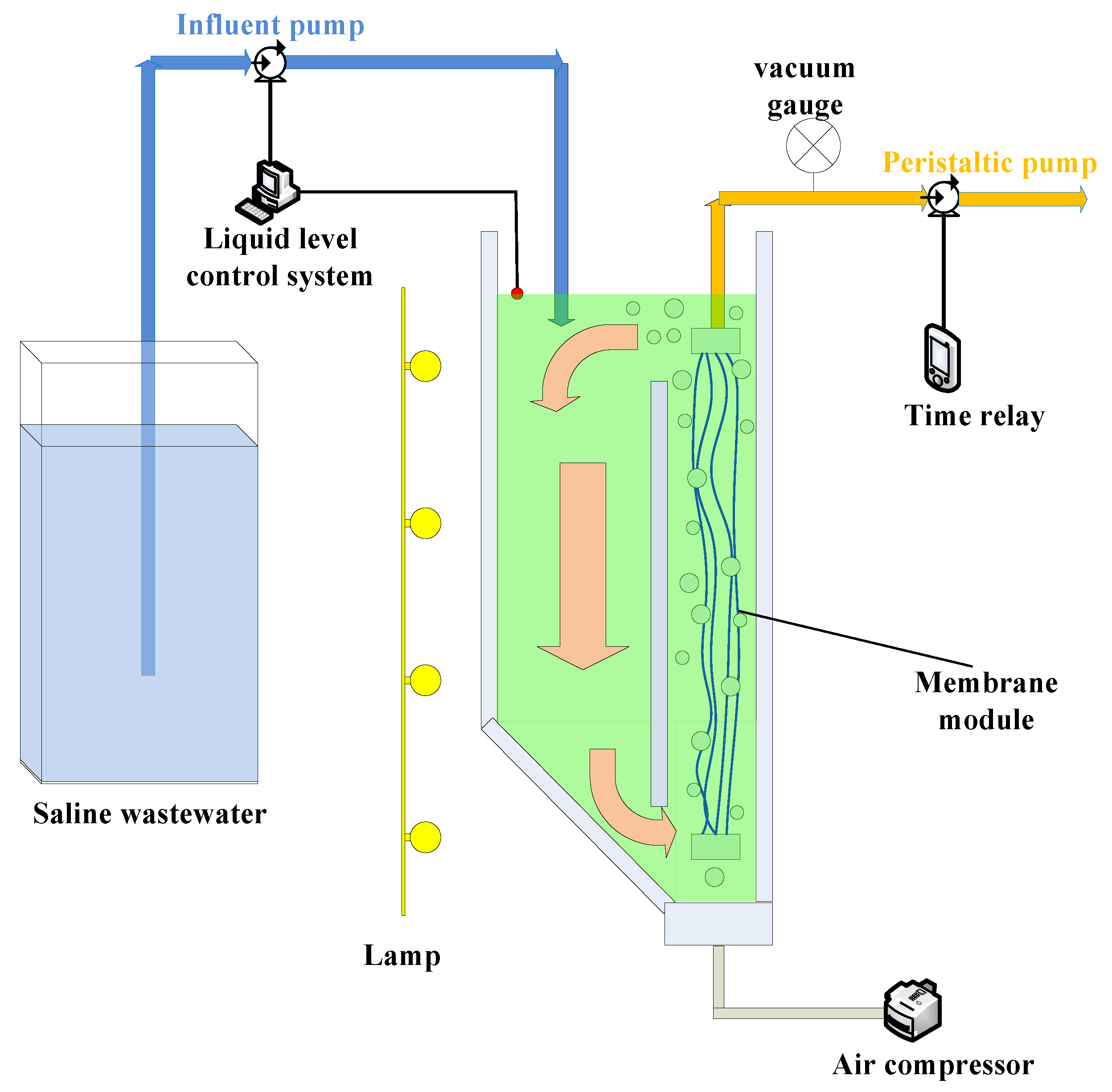Troubleshooting Common Issues with Membrane Bioreactor Systems
Wiki Article
The Advantages of Membrane Layer Bioreactors in Sustainable Wastewater Monitoring
Membrane layer bioreactors (MBRs) stand for a crucial development in sustainable wastewater management, successfully combining biological therapy with innovative membrane layer filtering innovation. This assimilation not only boosts effluent top quality by efficiently eliminating pollutants yet likewise opens avenues for water reuse in different applications, therefore attending to the pressing need for source preservation. The portable design of MBRs adds to significant reductions in environmental influence and functional prices. As the demand for sustainable remedies intensifies, discovering the multifaceted advantages of MBRs may reveal unanticipated implications for the future of wastewater treatment systems.Review of Membrane Layer Bioreactors
Membrane bioreactors (MBRs) represent a substantial development in wastewater treatment modern technology, integrating organic destruction with membrane filtration to boost the performance of the therapy procedure. This innovative system integrates the benefits of traditional triggered sludge procedures with membrane layer innovation, permitting enhanced solid-liquid separation. MBRs use semi-permeable membrane layers to separate cured water from biomass, resulting in high-quality effluent that can be recycled or securely discharged into the setting.The operational style of MBRs typically entails a bioreactor where microbes damage down organic matter, followed by a membrane layer unit that filters the combined alcohol. This setup not only reduces the impact of the therapy facility yet also permits greater biomass concentrations and minimized hydraulic retention times. Moreover, MBRs can treating a bigger variety of pollutants, including nutrients and pathogens, making them appropriate for numerous applications, from community wastewater therapy to industrial effluent handling.
The assimilation of MBRs right into wastewater management systems is a sign of an expanding pattern in the direction of sustainable and reliable practices in ecological design. Their capability to generate high-grade effluent while minimizing area needs placements MBR innovation as a principal in modern-day wastewater therapy solutions.
Improved Effluent High Quality

The membrane filtration process works as a physical barrier, enabling the retention of microbes and particulate matter, which adds to a more clear and cleaner effluent (Membrane Bioreactor). MBRs run at greater biomass focus than standard turned on sludge systems, advertising a lot more efficient biodegradation of contaminants. This results in a decrease in biochemical oxygen need (BOD) and complete suspended solids (TSS) levels in the final effluent
In addition, MBRs demonstrate exceptional performance in dealing with tough wastewater structures, such as industrial effluents and wastewater with high nutrient lots. Because of this, the effluent generated is typically of greater top quality, enabling even more versatile disposal alternatives and decreased ecological influence. Ultimately, the enhanced effluent high quality attained through MBR modern technology emphasizes its crucial duty beforehand lasting wastewater management techniques.
Water Reuse Opportunities
The high-quality effluent produced by membrane layer advice bioreactors (MBRs) opens up considerable opportunities for water reuse in various applications. MBRs efficiently get rid of impurities, including microorganisms, suspended solids, and organic matter, resulting in treated water that meets or exceeds regulative standards for reuse. This high quality enables for the execution of water recycling initiatives across diverse fields.One prominent application remains in agriculture, where dealt with wastewater can be used for watering, advertising lasting farming practices while saving freshwater resources. Furthermore, MBR-treated effluent can be used for industrial processes such as cooling, cleansing, and as a procedure water resource, significantly lowering the need for drinkable water in these operations.
In metropolitan settings, MBRs help with making use of reclaimed water for landscape irrigation, bathroom flushing, and other non-potable usages, adding to the overall resilience of supply of water systems. Additionally, the integration of MBR modern technology in decentralized systems help in taking care of localized water needs, specifically in water-scarce regions.
Minimized Ecological Effect
Just how can the fostering of membrane layer bioreactors (MBRs) add to a minimized environmental impact in wastewater management? MBRs considerably boost the therapy efficiency of wastewater while lessening eco-friendly disturbances. By integrating biological treatment procedures with membrane layer filtration, MBRs effectively remove a large range of pollutants, including natural matter, nutrients, and virus. This sophisticated filtration leads to higher-quality effluent, which is important for safeguarding marine environments and lowering the concern on natural water bodies. right hereIn addition, MBRs operate at lower hydraulic retention times compared to traditional systems, leading to smaller treatment plant impacts. This portable style minimizes land use, thus protecting all-natural habitats and biodiversity. The process likewise creates much less sludge than traditional methods, mitigating disposal obstacles and lowering greenhouse gas emissions associated with sludge monitoring.
In addition, MBRs help with the recuperation of valuable resources, such as water and nutrients, adding to a round economy. By allowing water reuse for irrigation or commercial procedures, MBRs assist relieve freshwater scarcity, thus promoting sustainable water use practices. Eventually, the adoption of MBR innovation stands for a substantial stride in the direction of minimizing the environmental influence of wastewater management systems.
Financial Benefits of MBRs

Furthermore, MBRs facilitate the manufacturing of top notch effluent, which can be recycled for different applications, such as farming watering and industrial procedures - Membrane Bioreactor. This reuse capability can dramatically lower water purchase prices, offering a financial incentive for markets encountering stringent water policies
The compact layout of MBR systems likewise results in reduced land demands, which is particularly valuable in metropolitan locations where real estate is expensive. By reducing room, markets and communities can minimize land procurement and maintenance expenses.
In addition, MBRs commonly need less constant maintenance and have a longer life-span than standard systems, additionally contributing to set you back financial savings. In summary, the financial advantages of MBRs-- ranging from minimized operational costs to land savings and effluent reuse-- make them an engaging option for sustainable wastewater administration, discover this using both immediate and lasting economic benefits.
Conclusion
Membrane bioreactors stand for a transformative approach to lasting wastewater monitoring, integrating biological therapy with innovative membrane layer filtration for exceptional effluent quality. Their capability for reliable impurity elimination facilitates water reuse, consequently saving crucial freshwater sources. In addition, MBRs add to minimized ecological influences with compact designs and reduced sludge generation. Economic benefits better improve their stability, making MBRs a promising service for addressing the difficulties of wastewater treatment and advertising sustainable source administration.
Membrane bioreactors (MBRs) stand for a crucial advancement in sustainable wastewater management, properly combining organic treatment with sophisticated membrane filtration technology.Membrane layer bioreactors (MBRs) represent a significant innovation in wastewater treatment innovation, incorporating organic destruction with membrane layer purification to improve the effectiveness of the treatment process.Achieving improved effluent high quality is one of the most considerable benefits of making use of membrane layer bioreactors (MBRs) in wastewater therapy.Additionally, MBRs demonstrate superb efficiency in dealing with challenging wastewater structures, such as industrial effluents and wastewater with high nutrient lots.Integrating membrane layer bioreactors (MBRs) into wastewater administration not only minimizes environmental impact but additionally provides significant economic benefits.
Report this wiki page